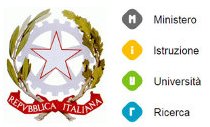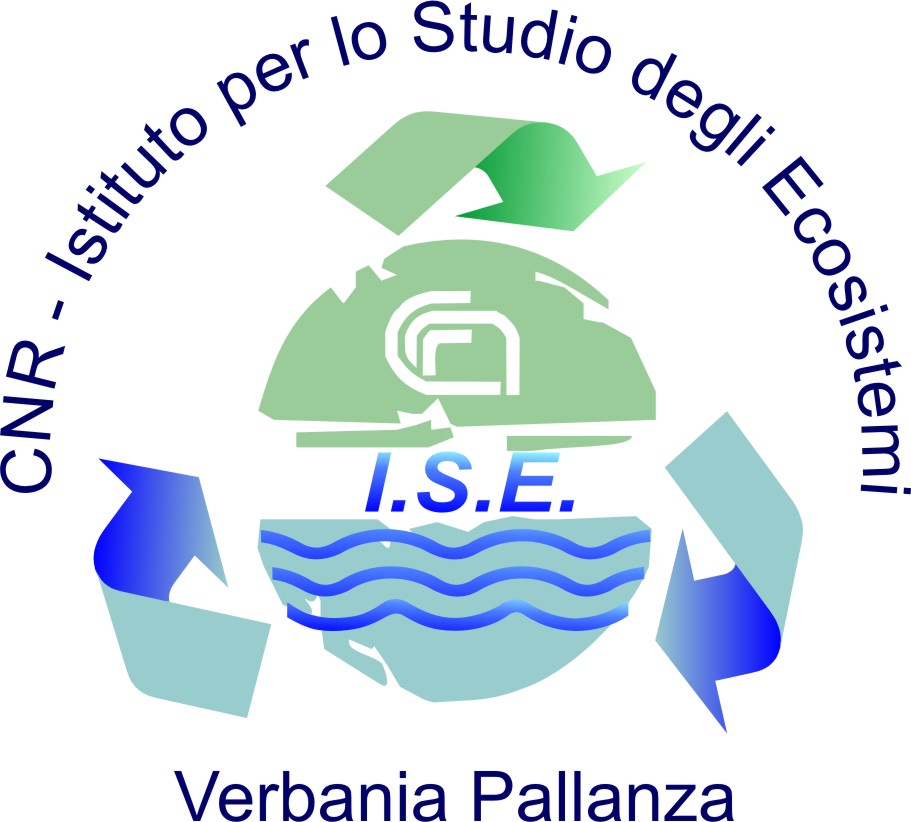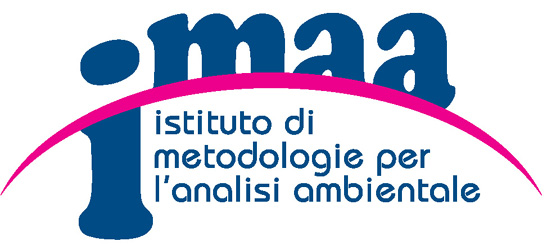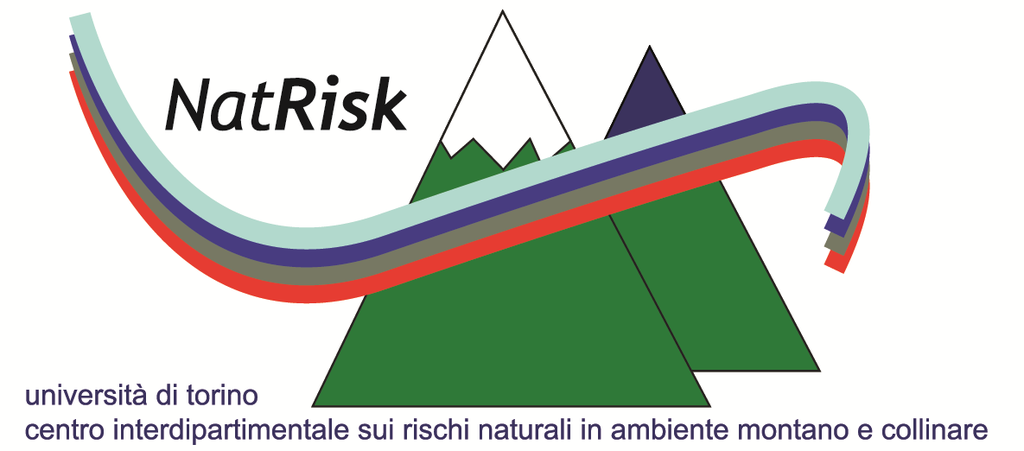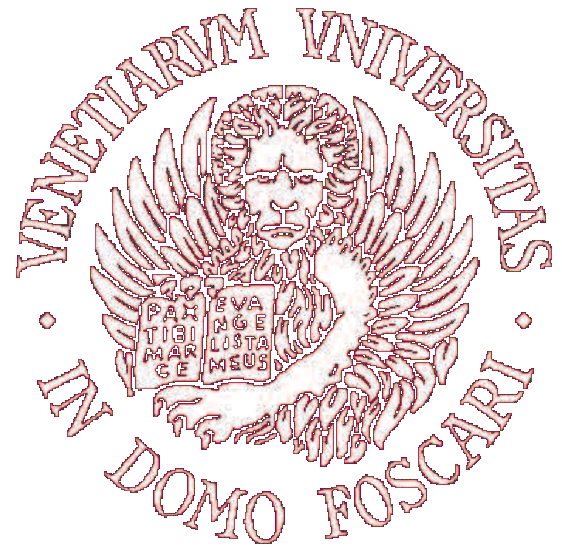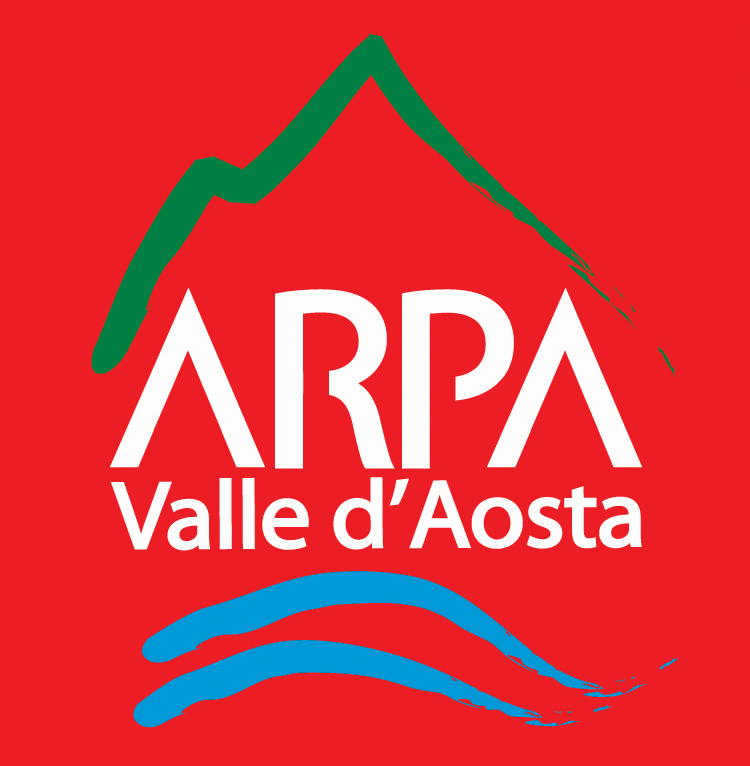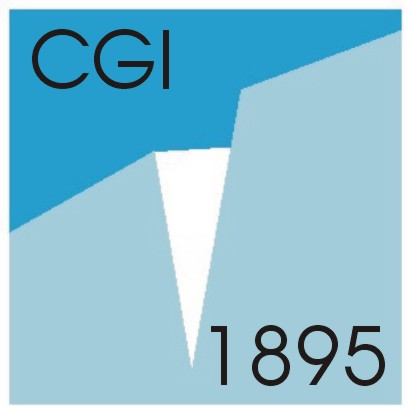You are here
Climate and environmental monitoring in the Italian mountains
Monitoring activities were devoted to the characterization of the current state of the climate and the environment in mountain regions. Here we present a few highlights of scientific results achieved by NextData.
Meteo-climatic data
(a) Quantitative assessment of atmospheric composition variability (atmospheric pollutants and climate-altering compounds) in the mountain regions of Italy.The activity is conducted at the Climate Observatory of Monte Cimone, the only "Global Station"of the GAW-WMO network in Italy, and at a nationwide network of measurement stations
Stratospheric O3 depleting substances (i.e. CFC, HCFCs, halons, CH3CCl3, CCl4, CH3Cl, CH3Br), observed at CMN since early 2000’s confirm the success of Montreal Protocol but at the same time point to the persistence of unaccounted emissions from European regions (especially for CH3CCl3, CCl4, CH3Cl, CH3Br). Non-CO2 greenhouse gases (HFCs, CH4 and N2O) included in Kyoto Protocol show significant increasing trends, while downward tendencies are observed for atmospheric compounds regulated by European air quality directives. In particular, over the period 1996 - 2016, a negative trend (significant at the 99% confidence level) of -0.21 ppb/year was calculated for near-surface O3. The largest trend decrease was detected for summer: this would reflect the decrease of O3 precursor emissions within Europe and northern Italy as confirmed by the non-methane volatile organic compound (NM-VOC) observations at CMN. For the period 2005 – 2013, we observed a statistically significant negative trend of -0.17 mg m-3 year-1 for equivalent black carbon (eqBC), an aerosol produced by the incomplete combustion of fossil fuels and biomass: heating systems, industries, traffic (in particular "Diesel" engines), agricultural and forest fires. Both, O3 and BC, besides to be atmospheric pollutants play a roles as short-lived climate forcers.
Summer variability of atmospheric pollutants/climate forcers were investigated by means of CMN observations. In particular, we identified three regimes which tagged the distance of anthropogenic sources: near outflow (23% of hourly data), far-outflow (38% of data) and background (39% of data). The highest levels of anthropogenic pollutants (e.g. O3, CO, eqBC, accumulation particles) were concomitant with fresh emissions from northern Italy under near-outflow conditions. As inferred by the integration of atmospheric transport modeling and continuous observations at CMN (2011-2017), we estimated that Italy is contributing to propane (C3H8) emissions for about 50 Gg/yr (about 50% from the Po basin), while the national contribution for benzene (C6H6) is about 22 Gg/yr (about 35% from the Po basin).
Continuous O3 measurements were activated at Col Margherita (MRG), in the Dolomite mountains. The first year of continuous observations provided hints about possible transport of air-masses influenced by anthropogenic emissions. Besides the existence of a diurnal cycle related with thermal mountain winds, a significant weekly cycle occurred at MRG during summer, with values increasing during the week. This would suggest the occurrence, during favorable weather conditions, of O3 build-up due to the impact of anthropogenic emissions. The Lagrangian tool STEFLUX was developed and used to diagnose the occurrence of deep SI events in four mountain regions over the Italian peninsula, spanning from the Alpine region to the southern Apennines. Both experimental (based on near-surface observations at high-mountain observatories) and STEFLUX detections agreed in describing the seasonal cycle of SI occurrence (maximum in winter and minima in summer). By using STEFLUX, we found positive tendencies in the SI occurrence during 1979–2017. In contrast to similar studies carried out in the Alpine region, the negative long-term trend of O3 in the northern Apennines did not appear to be related to the SI’s variability.
More details can be found in deliverable D1.1.B.
(b) Implementation of an integrated high-altitude network of climate monitoring in the mountain regions of Italy, starting from the global and regional GAW stations present in Italy
Nextdata was aimed at creating a network of atmospheric observatories in mountain and baseline locations over Italy for the monitoring of atmospheric composition and ancillary data (meteorological parameters and solar radiation). The integration of the atmospheric background observational network passed by a number of activities:
•The implementation of new measurement programmes at the background stations;
•The definition of guidelines to harmonize the measurement methodologies, protocols, QA/QC procedures, including the adoption of common reference calibration scales (e.g. GAW-WMO, ICOS, ACTRIS);
•The implementation of automatic procedures for submitting essential climate variables (ECVs) recorded at Italian Atmospheric Observatories to WMO/GAW data centres (https://nextdata.bo.isac.cnr.it);
•The implementation of NRT data delivery and early warning services.
More details can be found in deliverables D1.1.A, D1.1.B and D.1.1.F.
(c) Estimation of Elevation Dependent Warming in the Italian mountains
In the Greater Alpine Region, the relationship between warming rates and elevation is well represented by a linear model. The season showing the most striking evidence of EDW in both the minimum and maximum temperature is autumn. In fact, the elevational gradients of warming rates in this season exhibit always a positive and statistically significant slope, except in a few cases, and the spread among the individual model realizations which we employed at each resolution is overall smaller than in the other seasons.
In general, our analysis shows that the more frequent EDW drivers in all seasons are the changes in albedo and in downward thermal radiation and this is reflected in both daytime and nighttime warming. It is clear that our picture omits other factors which may contribute to EDW in the different regions. It is interesting to observe that in the Alps, and at the coarsest horizontal resolutions only, a significant EDW signal related to albedo changes is observed in the DJF season. At the coarsest resolutions, the orography is smooth, and the highest elevations are not realistically represented in the climate model. This result seems to suggest that the “model’s highest elevations” might undergo an earlier (winter) transition from being snow covered to being snow free in the future in winter months. Of course this signal is an artifact typical of the coarsest resolutions and disappears at finer resolutions when the orography is represented with more accuracy. On the contrary, the finest resolutions are the only ones able to catch the change in albedo as an EDW driver in SON in the GAR. This result would suggest an added value of the finest resolution simulations in the Alpine area.
More details can be found in the D1.1.D Deliverable “Future elevation-dependent warming on Italian mountains and related database".
(d) Realization of a climatology of monthly temperature and precipitation at 1km spatial resolution for the Italian Alpine area, and reconstruction of monthly data-sets of temperatures and precipitation temporal series at the same spatial resolution for the past decades for the three national parks of Gran Paradiso, Stelvio, and Paneveggio / Pale di San Martino
A mean regional series is estimated for each National Park to evaluate any trend over the analysed period. Temperature mean series show a significant positive trend over the whole considered period (1951-2012) for all the three areas (0.17°C per decade for Gran Paradiso, 0.24 °C per decade for Stelvio and 0.23 °C per decade for Paneveggio – Pale di San Martino), which becomes stronger if the period after 1981 is considered (0.35 °C per decade for Gran Paradiso, 0.38 °C per decade for Stelvio and 0.40 °C per decade for Paneveggio – Pale di San Martino). On the contrary, precipitation mean series do not show any significant trend in any subdomain.
Water resources
Several aspects concerning water cycle and water resources in mountain environment were dealt with, including the dynamic of groundwater systems and the monitoring of hydrologic variables and geomorphological processes.
Groundwater
Monitoring data concerning groundwater yield and physical-chemical features of major aquifer systems were analyzed in selected mountain and foothill areas of Central and Northern Apennines (Mt. Amiata and Apuan Alps systems, respectively) and Alpine zones (foothill system of the Piedmont). Geological, hydrogeological and hydraulic-hydrodynamic data, as well as chemistry and water isotopes signature of groundwater were taken into account and compared. This comprehensive approach steered the definition and/or the update of the aquifers conceptual model. Furthermore, numerical models of groundwater quantity were developed by different approaches, accordingly to the conceptual model and the hydrodynamic behavior of the aquifers. The statistical analysis performed on datasets highlighted some trends over the lasts two-three decades, both for groundwater quantity (piezometric levels, springs flowrate) and quality (chemical compounds concentration). A significant sensitivity to meteo-climate conditions was particularly showed by the foothill aquifer in the Alpine area, in which a high confidence trend of piezometric levels decrease occurred over both the periods 2004-2008 and 2010-2017, because of the respective rainfall decrease patterns. The rainy year 2009, which interposed itself between the two relatively dry periods, promoted sharp increases in terms of piezometric levels and concentrations of some chemical compounds in groundwater, thus pointing out as the hydrologic extremes can lead to the accumulation of nutrients and salinity in the unsaturated zone of the aquifer and their successive concentrate release in groundwater. Also the flowrate data of major springs in northern and central Apennines evidenced some hydrodynamic effects that the aquifers are experiencing in response to hydrologic trends and variable regimes. In particular, over the last two decades the karst springs of the Apuan Alps system show a weak decrease of the flowrates during the wet season, as well as a major frequency of concentrated peaks of discharge and longer periods with low flowrate. On the other hand, the volcanic system of the Mt. Amiata, which is characterized by pluriannual hydrodynamic cycles, over the last thirty years of observation has been interested by a significant change in the pattern of flowrate cycles starting from 2009. In particular, the major spring (550 L/s as average flowrate) of this system presents in the post-2009 period shorter hydrodynamic cycles and higher maximum values of flowrate at the top of such cycles, as response to an higher number of heavy rainy events. Methodologies and results are discussed more in detail in the deliverables D1.2A,B.
Hydrology
The main result consists in the “Database Idrologico Bacini Appenninici” (DIBA) concerning the collection and organisation of meteo-geo-hydrological time series (precipitation, temperature, soil moisture, discharge) of two pilot Apennines basins, located in Umbria and Tuscany/Liguria region territory. DIBA is populated using rainfall data, soil moisture conditions and extensive streamflow information from ground-based measurements and satellite observations. The development of a data quality controlled, geo-referenced and processed methodology for an accurate estimate of hydrological variables, to be used for flood event analysis and for runoff regime assessment in Apennines basins, is an outcome of DIBA. This is complemented by a procedure for the quality control of the information gathered by the hydro-meteorological network and appropriate criteria for the evaluation of the adequacy of existing monitoring networks are provided in terms of knowledge, methodologies and operative functions. Monthly monitoring campaigns of soil moisture in hillslope at two pilot areas have permitted to collect and analyse soil moisture time series data and compare with the ones retrieved by satellite (e.g. ASCAT, AMSRE), allowing us the characterization of spatial-temporal soil moisture variability using statistical and geo-statistical methods and identification of the main factors affecting the variability at different scales. Campaigns also concerned the discharge, by developing a procedure for estimating river flow even during extreme events based on the measurement of the surface velocity only and which allowed us to identify the flow depth-discharge relationship at ungauged river sites. In this context, the project also provided guidelines for post-flood surveying focused on assessment of flood peaks estimation at different locations along the river and floods occurred in the two pilot-basins are used as case-studies. The climate variability is also investigated for the essential hydrological variables (precipitation and temperature) along with soil moisture and trends are identified for possible meteo-hydrological scenarios expected in the next decades, also in terms of runoff. For the latter, the continuous hydrological model MISDc (‘Modello Idrologico Semi-Distribuito in continuo’), developed at CNR-IRPI, was came up with for the two pilot areas. Specifically, DIBA embeds time series of downscaled data of nine selected RCMs EURO-CORDEX models for two different periods, i.e. the baseline (1981-2005) and the future (2070-2099). The climate change impact for the two pilot basins in terms of precipitation, temperature, soil moisture and discharge is analyzed and a decrease on annual mean precipitation coupled with a consistent increase on mean annual temperature is expected for future. Therefore, expected temperature and precipitation time series are used to initialize MISDc for the two pilot-basins and an increase in peak discharge, on average, of about 40% for 2080 is found for both. All climatic series are available in DIBA.
Geomorphological processes
The analysis of ground surface movements aims to define the geomorphological evolution of single or multiple landslides. In the framework of the project, the measurements derived from in-situ monitoring techniques were collected. They include Total Station, GPS receivers, extensometers, inclinometers installed in landslide sites located in Italy: Gardiola (Germanasca Valley, Piemonte, Northern Italy), Grange Orgiera (Varaita Valley, Piemonte, Northern Italy), Montaldo di Cosola (Cabella Ligure municipality, Piemonte, Northern Italy) and Ivancich (Assisi municipality, Umbria, Central Italy). For the Gardiola and Grange Orgiera landslides the measurements were provided by a permanent monitoring network since 2004, made up of topographic network with a Robotic Total Station (LEICA 2003 with Automatic Target Recognition ATR) were collected. For Montaldo di Cosola and Ivancich landslides, the ground deformation measurements were provided by inclinometers. For Ivancich landslide were also available the measurements of ground deformation and velocity time series obtained by applying SBAS DinSAR technique on satellite SAR images (ERS and ENVISAT from 1992 to 2010, CosmoSky-MED 2009 to 2012). Moreover,for Valle d’Aosta region, new mean velocity maps and ground deformation time series have been generated taking advantage of the G-POD service based on SAR images processing. The Envisat ASAR available data have been processed by the P-SBAS technique, both in ascending and descending orbits. The period of observation ranges from June 2004 and October 2010 for the ascending orbit and from September 2004 and October 2010 for the descending orbit. The comparison with the available meteorological data (i.e. height of snow, rainfall picks) allowed to minimize the temporal decorrelation effects mainly related to the snow cover, preserving the largest number of SAR acquisitions. In order to validate the obtained results, the SBAS targets were compared with the Permanent Scatters (PSs) available on the “Portale Cartografico Nazionale” (http://www.pcn.minambiente.it/mattm/). A good agreement between the selected SBAS targets and PSs surface deformation rates have been observed, and a comparable distribution con be observed. The number of Rock Glaciers (RGs) covered by the SBAS targets are 123 for ascending orbit, and 65 for descending orbit. Generally, the mean velocity maps analysis highlights good agreement with the state of activities of the inventoried RGs. Specifically, the time series provide the analyze eventual RGs activation and/or seasonal deformations over the observed period. Methodologies and results are discussed more in detail in the deliverables D1.2C.
Ecosystems and biodiversity
An important part of the NextData project has been devoted to the measurement and monitoring of mountain ecosystems and biodiversity, to provide an overview of how climate and environmental changes are affecting the biosphere in mountain environments.
In addition to the scientific activities, dissemination activities, focused on mountain environments, was carried out. These included a video and a photo exhibition on mountain ecosystems, hosted by the Museums of Natural History of Trento and Pisa, and a series of conference that covered several aspects of mountain ecosystems, aimed to the general public, hosted by the Museum of Natural History of the University of Pisa.
The following scientific issues were addressed during the research activities:
(h) collection and provision of data on mountain ecosystems from the Italian sites contributing to ILTER (International Long-Term Ecological Research network) and LTER-Europe;
(i) measurements and quantitative observations of biodiversity in high-altitude regions in a set of Alpine protected areas, through the collection of biodiversity data, distribution of animal species, population dynamics of important species (as keystone, flagship species);
(l) quantitative estimate of biogeochemical flows (water, carbon) through soil, vegetation and atmosphere in test sites, for determining the dynamics and the carbon source/sink behavior in selected types of alpine ecosystems;
(m) analysis of the dynamics of alpine meadows in the context of climate and land use changes, focusing on changes in sheep management and cattle grazing and on the interactions with wild ungulates, using in situ measurements and satellite observations;
This area of activity has led to the construction of a system of distributed thematic archives, from which the data and the results produced by the project can be downloaded (thematic maps; results; climate, hydrological and ecosystem indices; and numerical simulation products). Particular attention will be given to the validation, quality control and harmonization of data, often coming from different sources.
The data have been analyzed and interpreted in order to obtain a state of the art as complete as possible on the state and ongoing changes in the Italian mountains, leading to the publication of several scientific papers and technical reports.
The mountain Critical Zone
The Critical Zone (CZ) is a heterogeneous environment at the Earth surface where chemical, physical, geological and biological processes interact with each other involving all environmental matrices such as rock, soils, water, air and living organisms. The CZ, also called the “living skin of the planet”, is the transition zone between atmosphere, vegetation and the underground realm extending through the pedosphere into the unsaturated and saturate zone, and finally to the “undisturbed” bedrock. In the CZ water, carbon and energy cycles are tightly coupled with each other and determine exchanges of matter and energy throughout the terrestrial biosphere, providing essential ecosystem services such as water regulation and carbon sequestration. The study of CZ is a multidisciplinary research arena where different scientific communities analyze a multiplicity of aspects (e.g. geochemistry, geology, hydrology, ecology) to unravel the workings of the support system of all terrestrial life. Such studies are based on field measurements, taken in a network of CZ Observatories in the world (www.czen.org), remote sensing, and numerical modelling. In a sense, the Critical Zone is a prime example of the complex processes linking the geosphere, the biosphere and the climate (www.to.isac.cnr.it/gpss).
Global changes, including climate and land-use change, soil erosion and water/air pollution, affect the CZ in many complex and potentially disrupting ways. Soil loss and degradation, modifications of water and carbon cycles, biodiversity loss and ecosystem disturbances are impacting the CZ, potentially leading to a strong reduction in its ecosystem services provision. In high-altitude mountain areas and in polar regions, the CZ is a thin but essential layer between ice, permafrost, rock and the atmosphere, and it is especially exposed to the dangers associated with environmental and climatic changes.
To quantitatively study the dynamics of the high-altitude mountain Critical Zone, in the framework of the NextData project we have established the first Italian CZ observatory, in three specific sites in the Gran Paradiso National Park: the high-elevation (2600 meters a.m.s.l.) area of the Nivolet Plain, the recently deglaciated Valley of Nel (2200 meters a.m.s.l.), and the lower-altitude, grazed Valley of Noaschetta. The Nivolet area, where most activities were carried on, is covered with snow from November to June, is characterized by a complex environment of alpine pastures, oligotrophic lakes, peat bogs, rock outcrops and meandering streams, and it is the habitat of ibex, chamois, eagles and marmots. Domestic ungulates (cattle, sheep, goats) are brought up during the short mountain summer. The geological substrate includes areas with gneiss, carbonates, glacial deposits and alluvial soil. Two nearby weather stations provide daily records of temperature, precipitation and snow cover since more than 50 years. In this area, starting from 2016 we have conducted measurements on the carbon fluxes between soil, vegetation and atmosphere, using portable flux chamber methods and fixed eddy covariance stations. Hydrological and soil chemical and physical measurements, meteo-climatic records, vegetation surveys and biodiversity estimates complete the monitoring activities, together with the analysis of satellite observations.
The expertise gained in the Critical Zone Observatory at the Gran Paradiso National Park is now being applied to the establishment of new CZ Observatories in other mountain areas in Italy and in Europe.

